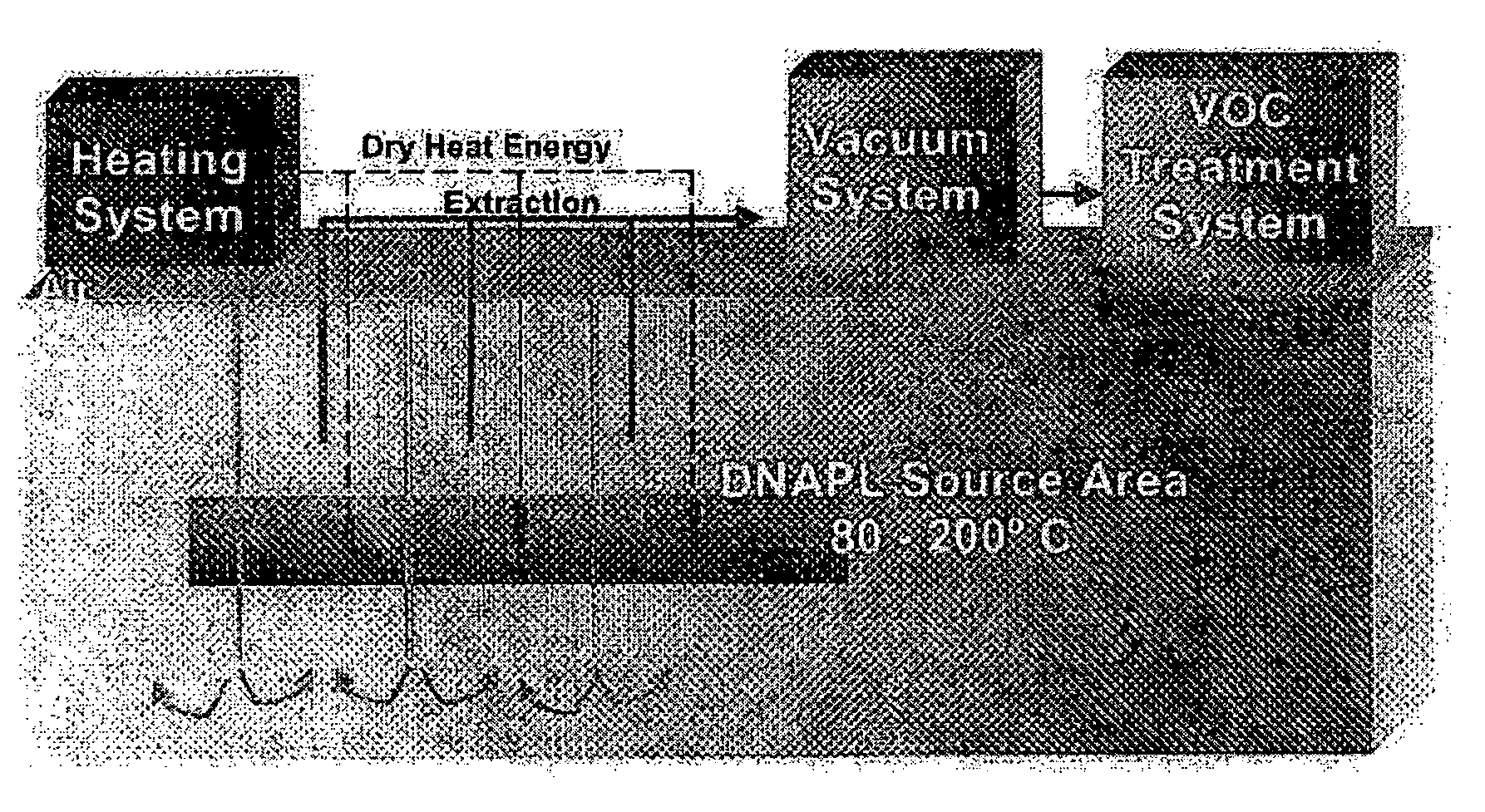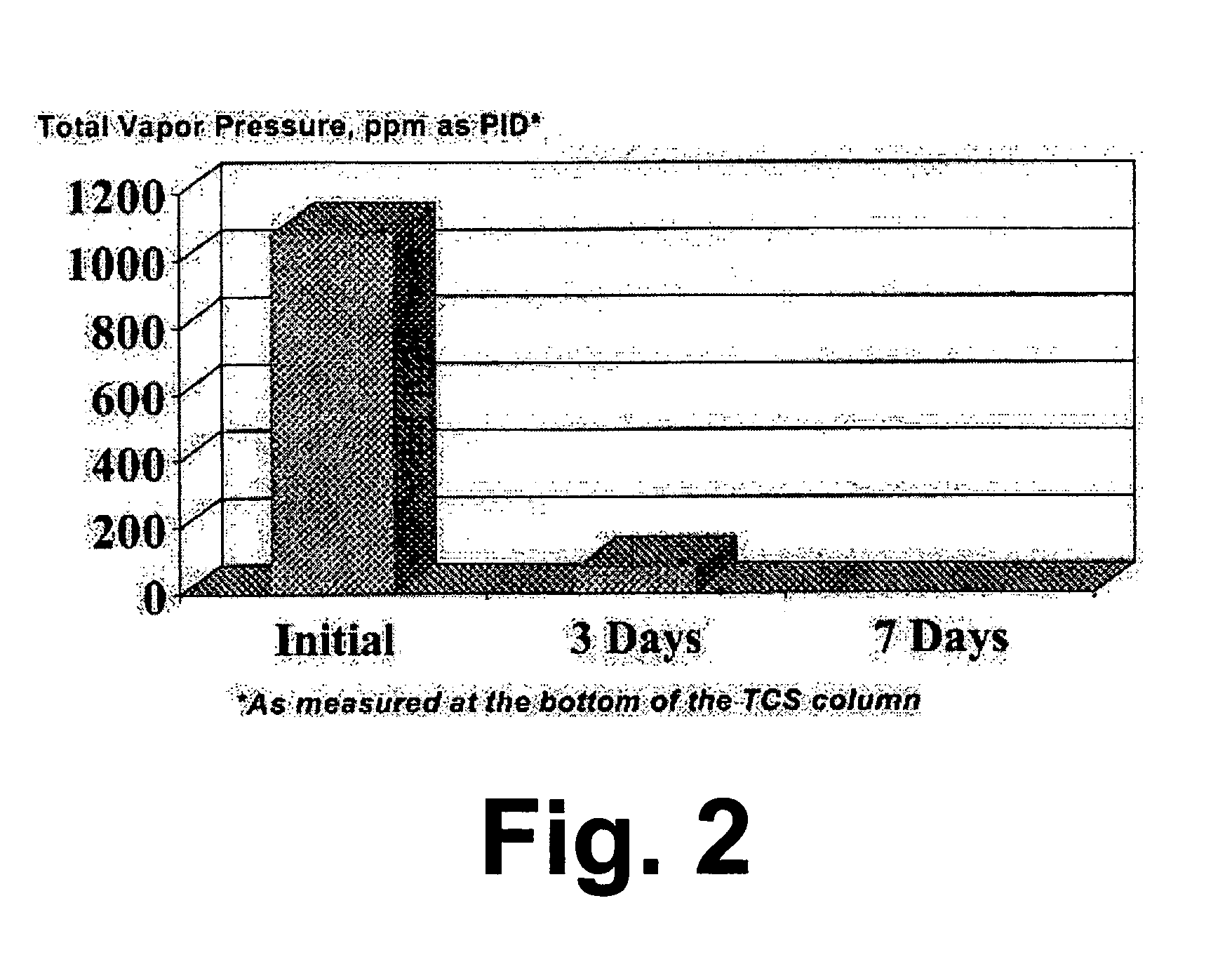In-situ thermochemical solidification of dense non-aqueous phase liquids
- Summary
- Abstract
- Description
- Claims
- Application Information
AI Technical Summary
Benefits of technology
Problems solved by technology
Method used
Image
Examples
examples
[0063]In this example, thermochemical solidification was applied to the treatment of dense non-aqueous phase liquids in a gas holder of an MGP site that was 50 feet in diameter and 22 feet deep. The holder had already been decommissioned and what remained is the subsurface holder tank that had been filled in with demolition materials and soil. Soil borings and PID profile measurements showed that high PID readings were obtained in a layer that extends from the bottom of the holder to 6 feet above the bottom of the holder. Contaminant mobility testing of soil samples showed that 90 percent of the rapid release fraction contaminant mass was located in the 6 ft dense non-aqueous phase liquids layer at the bottom of the holder. This layer was thus targeted for thermochemical solidification. The dense non-aqueous phase liquids layer contained some free water and the composition of the drained soil / dense non-aqueous phase liquids material was as follows: 1) DNAPL content=10%; 2) solubiliz...
PUM
| Property | Measurement | Unit |
|---|---|---|
| Temperature | aaaaa | aaaaa |
| Temperature | aaaaa | aaaaa |
| Length | aaaaa | aaaaa |
Abstract
Description
Claims
Application Information
 Login to View More
Login to View More - R&D
- Intellectual Property
- Life Sciences
- Materials
- Tech Scout
- Unparalleled Data Quality
- Higher Quality Content
- 60% Fewer Hallucinations
Browse by: Latest US Patents, China's latest patents, Technical Efficacy Thesaurus, Application Domain, Technology Topic, Popular Technical Reports.
© 2025 PatSnap. All rights reserved.Legal|Privacy policy|Modern Slavery Act Transparency Statement|Sitemap|About US| Contact US: help@patsnap.com



